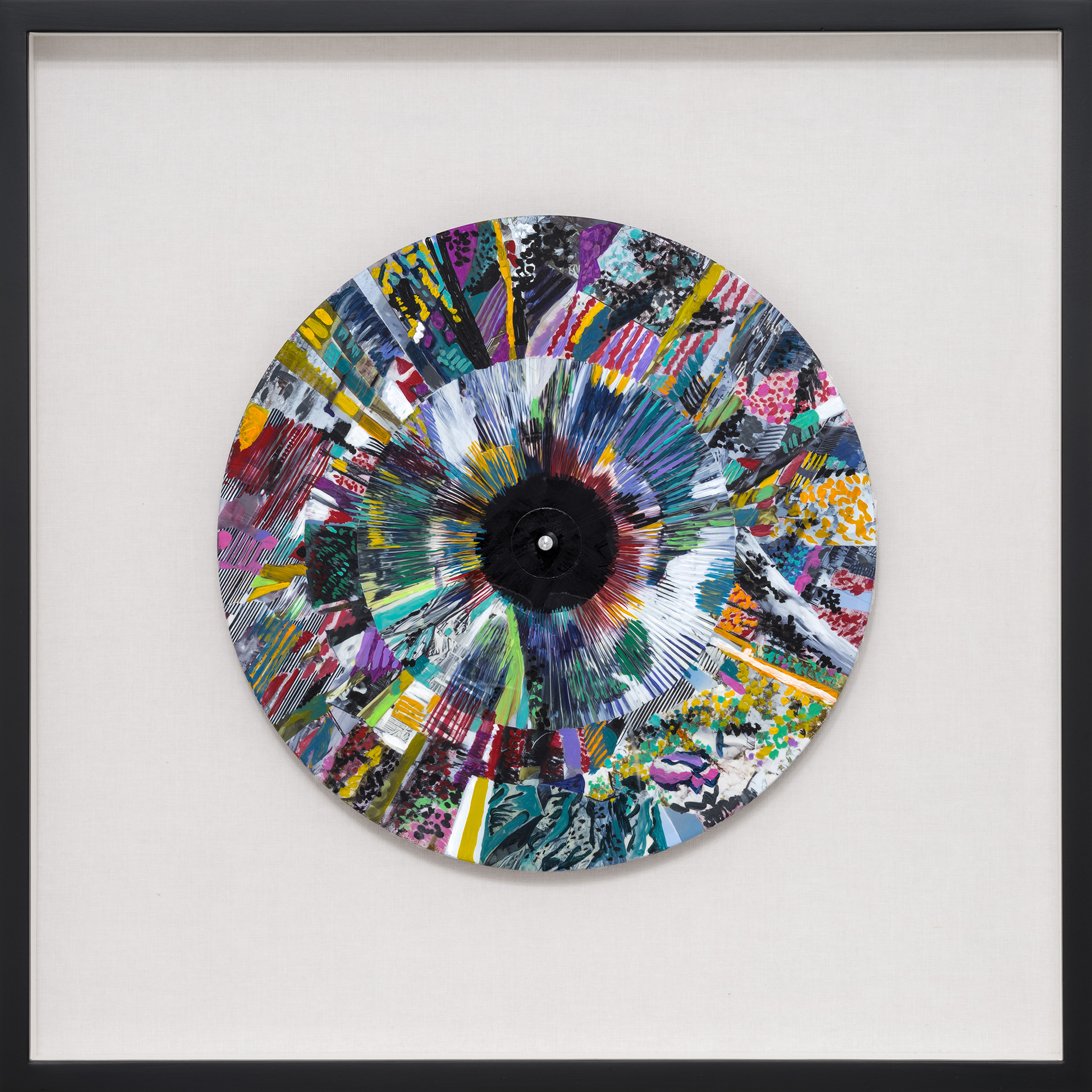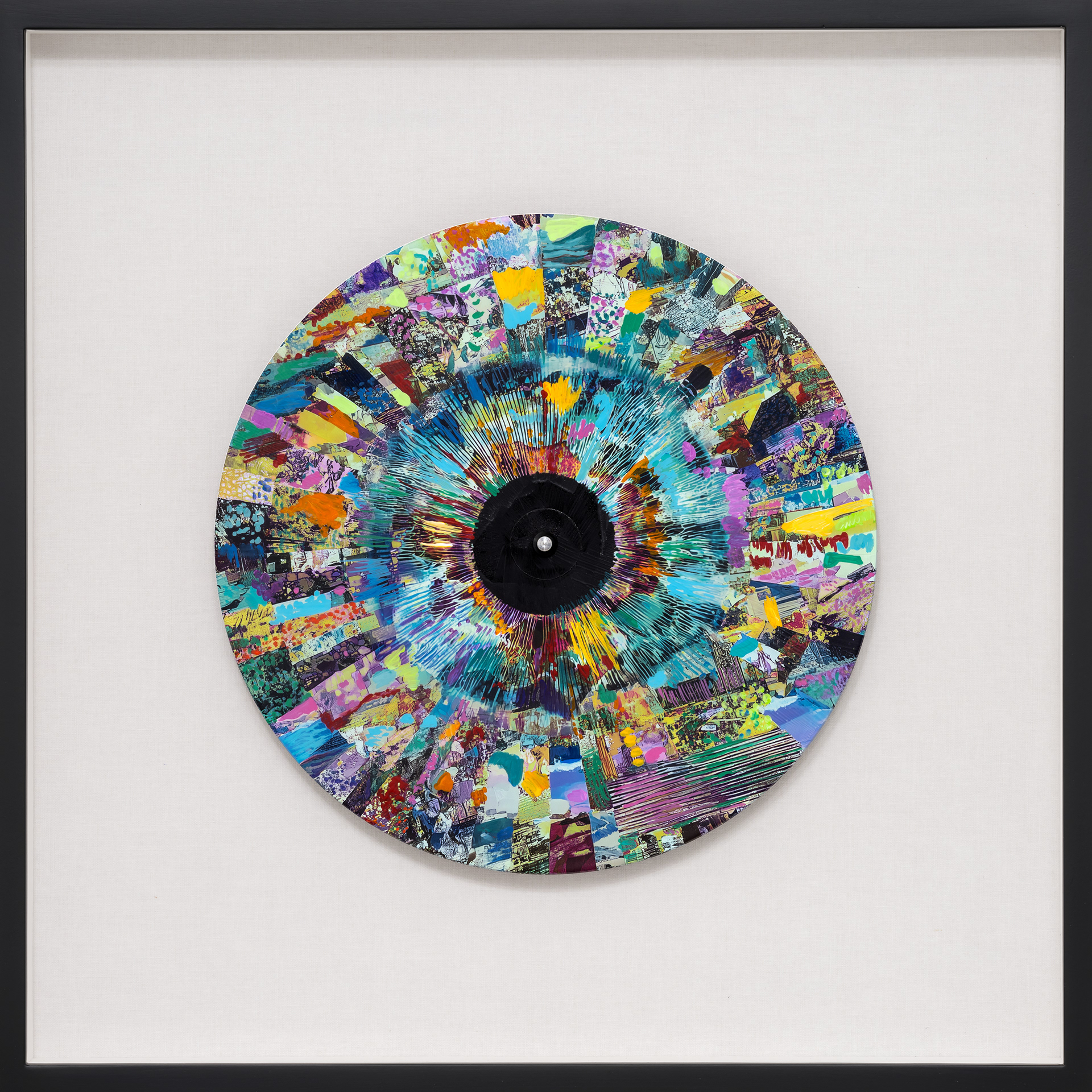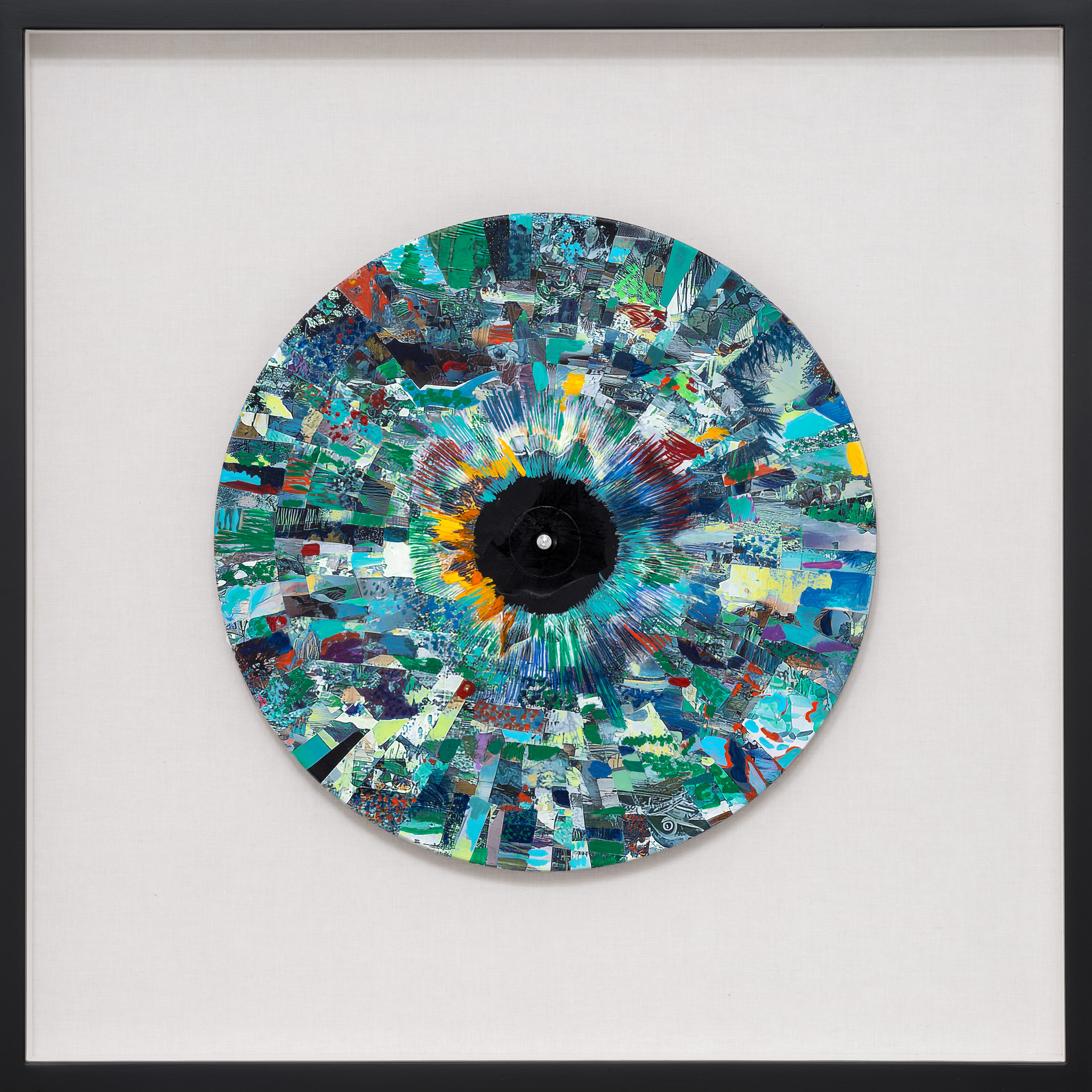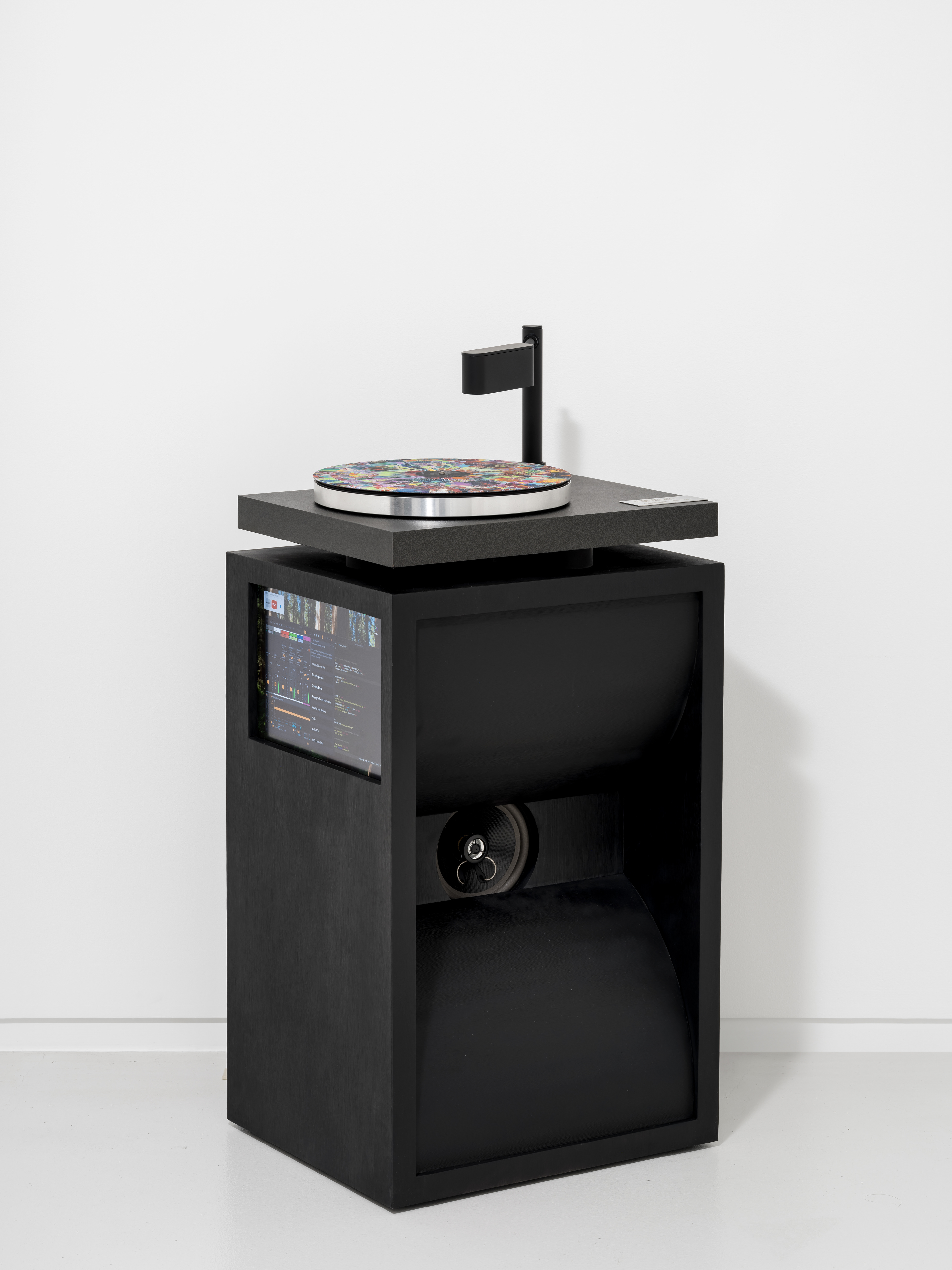at BB&M Gallery, Seoul, Korea. 23 August - 18 October, 2025.
Champagne Supernova, 2025. Single-channel 4K video, colour. 88 mins.
Champagne Supernova, a solo exhibition by Jinjoon Lee, explores the ontology of the post-digital era, where myth and history, memory and data, identity and anonymity converge. Champagne Supernova evokes the paradox of dazzling brilliance and imminent extinction, suggesting that the fleeting radiance of light, bubbles, and exploding stars embodies the traces and memories we leave within a digitized universe.
At the heart of Champagne Supernova (2025), Lee examines the ontology of the post-digital era, where myth and history, memory and data, identity and anonymity converge. The titular work, Champagne Supernova, is shown on a monumental 4 × 5.5m LED screen at the centre of the gallery. Using an AI-based super-resolution framework (CoZ), the artist extracts radial iris patterns—ordinarily used for biometric identification—and transforms them into 88 abstract sequences of light and colour inspired by constellations. Stripped of personal information, the iris remains only as a luminous trace, a cosmic portrait beyond individuality.







Login Odyssey No.1 - 5, 2025. Scanned collage and acrylic gouache on LP Record, 30 × 30 cm.
Mnemosyne No.2, 2025. Artist-customized turntable. 32 × 41.5 × 5.5cm.
Installation view at BB&M Gallery.
Photography by BB&M.
The installation Login Odyssey (2025) offers a synaesthetic encounter by translating the iris into sound. When placed on a specially customised turntable, the vividly coloured LP records transform visual qualities—such as brightness and saturation—into auditory signals. A 4K camera replaces the traditional stylus, converting the device from phonograph to transcoder. Login Odyssey subtly shifts its sounds in response to surrounding environmental conditions such as changes in light, brightness, and the movements of visitors, which vary between day and night. Here, the most intimate data is reborn as impersonal artistic material, enabling the audience to experience a “listening portrait” that traverses private and public realms.
On Some Faraway Shore, 2025. Installation view at BB&M Gallery.
Photography by BB&M.
Lee also presents the new painting series On Some Faraway Shore (2025), where AI and human brushstrokes intersect. These hybrid collage paintings originate from an extensive archive of ecological photography, mineral textures, cellular imagery, and anatomical scans. Through AI-driven curation and digital processing, the works are finalised by hand, revealing the fragility of life, memory, and landscape in light and colour.
Memory Theatre, 2025. Single-channel 4K video, colour, sound. 10 mins.
Mnemosyne Theatre, 2025. Immersive 4K video for Apple Vision Pro, 10 mins.
Other works include the single-channel video Memory Theatre (2025) and the VR installation Mnemosyne Theater (2025). Notably, Mnemosyne Theater makes use of Apple’s recently released Vision Pro, immersing viewers in a dazzling circular theatre where the relationship between seeing and being seen is inverted.
Through Champagne Supernova, Lee demonstrates how contemporary media art extends beyond technical demonstration, transforming AI, data, and sensory experience into a critical artistic discourse.
Through Champagne Supernova, Lee demonstrates how contemporary media art extends beyond technical demonstration, transforming AI, data, and sensory experience into a critical artistic discourse.
